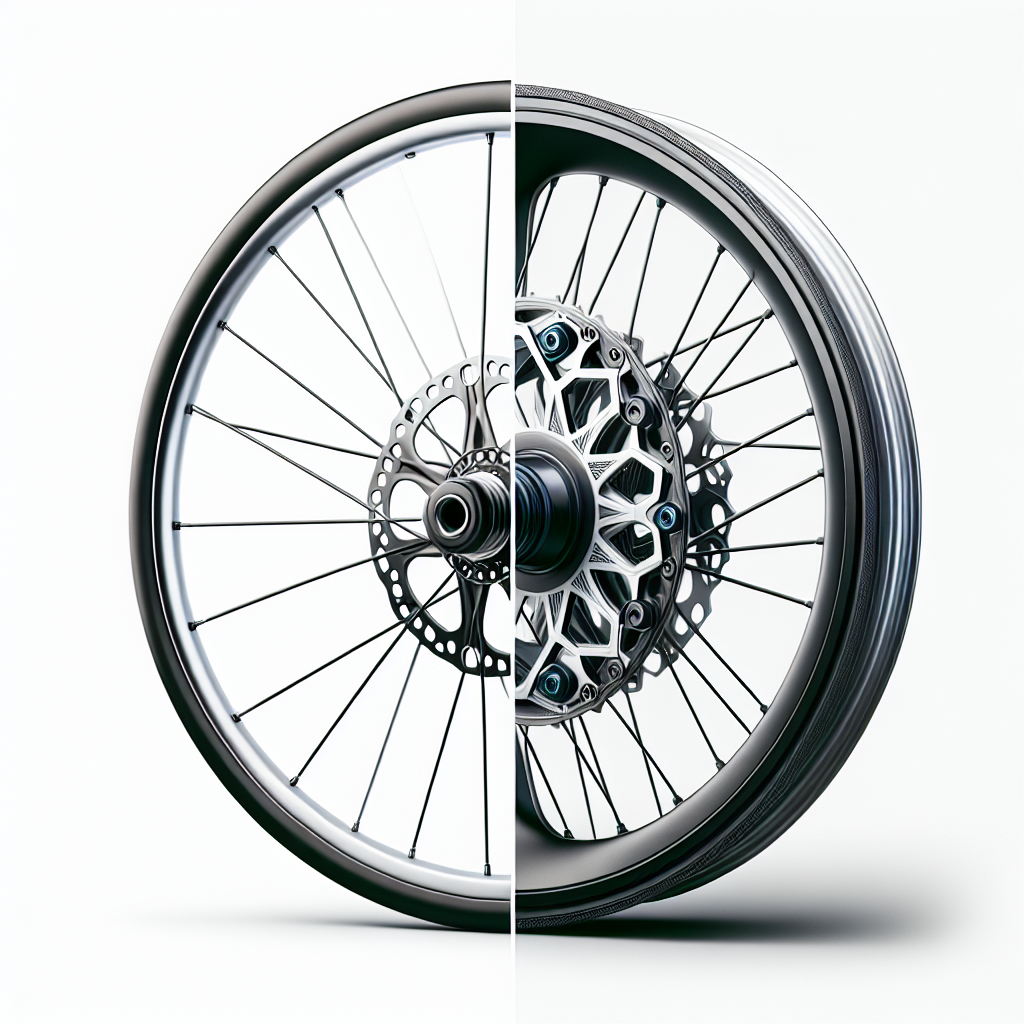
Choosing the right wheelset for your bicycle can significantly impact your riding experience. Whether you’re a competitive cyclist, a weekend warrior, or a daily commuter, understanding the differences between lightweight and durable wheelsets can help you make an informed decision. This article delves into the pros and cons of each type, providing insights to help you select the best option for your needs.
Understanding Lightweight Wheelsets
Lightweight wheelsets are designed with one primary goal in mind: reducing the overall weight of the bicycle. These wheelsets are typically made from high-end materials such as carbon fiber or lightweight aluminum alloys. The reduction in weight can lead to several performance benefits, particularly for competitive cyclists and those who enjoy long-distance rides.
Advantages of Lightweight Wheelsets
One of the most significant advantages of lightweight wheelsets is the improvement in acceleration. With less mass to propel, riders can achieve higher speeds more quickly, making these wheelsets ideal for racing and time trials. Additionally, the reduced weight can make climbing hills and navigating challenging terrains easier, as there is less resistance to overcome.
Another benefit is the overall reduction in fatigue. Lighter wheelsets require less effort to maintain speed, allowing riders to conserve energy over long distances. This can be particularly advantageous for endurance cyclists who need to manage their energy reserves carefully.
Disadvantages of Lightweight Wheelsets
Despite their benefits, lightweight wheelsets are not without their drawbacks. One of the primary concerns is durability. The materials used to achieve a lower weight can be more susceptible to damage from impacts, potholes, and rough terrain. This makes lightweight wheelsets less suitable for off-road cycling or commuting in areas with poor road conditions.
Additionally, lightweight wheelsets can be more expensive than their durable counterparts. The advanced materials and manufacturing processes required to produce these wheelsets often come with a higher price tag, which may not be justifiable for casual riders or those on a budget.
Exploring Durable Wheelsets
Durable wheelsets, on the other hand, prioritize strength and longevity over weight reduction. These wheelsets are typically constructed from robust materials such as steel or heavy-duty aluminum, designed to withstand the rigors of daily use and challenging environments. They are an excellent choice for commuters, touring cyclists, and those who frequently ride on rough or uneven surfaces.
Advantages of Durable Wheelsets
The most obvious advantage of durable wheelsets is their resilience. These wheelsets can handle a variety of conditions, from pothole-ridden city streets to rugged off-road trails. Their robust construction means they are less likely to suffer damage from impacts, reducing the need for frequent repairs or replacements.
Durable wheelsets also tend to be more cost-effective in the long run. While they may be heavier, their longevity means that riders can avoid the recurring costs associated with replacing damaged or worn-out lightweight wheelsets. This makes them a practical choice for those who prioritize reliability and value over performance.
Disadvantages of Durable Wheelsets
The primary disadvantage of durable wheelsets is their weight. The additional mass can make acceleration and climbing more challenging, requiring more effort from the rider. This can be a significant drawback for competitive cyclists or those who frequently tackle hilly terrain.
Another potential downside is the impact on ride quality. Heavier wheelsets can result in a less responsive and agile ride, which may be less enjoyable for some riders. The increased weight can also contribute to greater fatigue over long distances, as more effort is required to maintain speed.
Making the Right Choice
When it comes to choosing between lightweight and durable wheelsets, the decision ultimately depends on your specific needs and riding style. Competitive cyclists and those who prioritize speed and performance may find that lightweight wheelsets offer the advantages they seek. On the other hand, commuters, touring cyclists, and those who frequently ride on rough terrain may benefit more from the reliability and resilience of durable wheelsets.
It’s also worth considering a hybrid approach. Some wheelsets offer a balance between weight and durability, providing a middle ground that can cater to a broader range of riders. These wheelsets may use a combination of materials and design features to achieve a compromise that offers both performance and longevity.
Conclusion
In conclusion, both lightweight and durable wheelsets have their unique advantages and disadvantages. Understanding these differences can help you make an informed decision that aligns with your riding goals and preferences. Whether you prioritize speed, resilience, or a balance of both, there is a wheelset out there that can enhance your cycling experience. Take the time to assess your needs, consider the conditions you’ll be riding in, and choose a wheelset that will provide the best performance and value for your specific situation.

